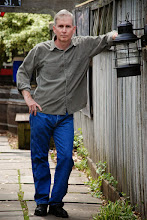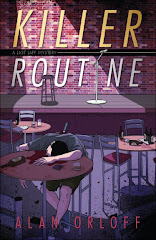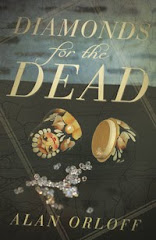So what is it with transitions, anyway? What’s the best way to move from one scene to another?
Scene transitions are always a stumbling block for me. I’m usually tempted to start a scene with something simple and direct.
“Three days later, Jim woke up. It was Tuesday morning. In Los Angeles.”
But that gets old (real old), scene after scene (and it sounds like I’m channeling Jack Webb).
On the other end of the spectrum is the scene that begins with no transition, one that jumps right into the action. These are tempting, too, except I’m always afraid I’ll leave my reader confused as to where and when the action is taking place.
In reality, I guess I mix it up. Sometimes I’ll ground the scene, other times I’ll just jump in and try to make the time/place obvious through context. Since most of my critique members and beta readers don’t even comment on my transitions, I suppose I’m handling them adequately, even if I think some of them are kind of clunky.
Writers, how do you prefer to handle scene transitions?
Readers, are there certain types of transitions that bother you?





















8 comments:
If you get the magic formula on this one, let me know. I think the best way is to leap into context, without transition or introduction:
"Alan tested the window. It was locked."
The reader must know, from a previous scene, that Alan is about to do something.
Alan - Transitions really are difficult! I try not to get too wordy when I write them, because they really can get clunky. I go for simple words and phrases (e.g. "The next morning, Alan woke up to hear the rain pounding down..."). I think most readers don't want transitions to be overdone. I haven't figured out the magic recipe, but I think simple is best.
Oh, and folks, please do check out Alan's great 50-word mystery. It's terrific!
Ah, the hardest words for me to write as a beginner were, "By Friday..." I really wanted to be with my characters 24/7
I'm talking about the challenges of handling time on my own blog today--there must be something out in cyberspace. But since I write with more than 1 POV character, time moves forward for each of them--even when they're off the page. Transitions are critical
Terry
Terry's Place
Romance with a Twist--of Mystery
Later that morning...
Steve - Yeah. "Alan opened the door and stepped out. Unfortunately, the plane was still at 12,000 feet."
Margot - Thanks for having the 50-word exercise--it was a lot of fun, and you got some great little stories!
Terry - More POVs = more transitions. Youch!
I also write from several POVs - so I can finish one section from one POV and then jump to the next POV section which may be happening at the same time or not, but the action continues. (I hope. I could be wrong. It could be one big muddle. Curses.)
Loved your 50 word wonder over at Margot's blog today!
Good question! I'm still working on getting smooth transitions. I like Stephen Parrish's advice to leap into context. But sometimes that can be confusing. It's getting that right balance between leaping in, but clarifying what's happening that's so tricky.
That afternoon...
Elspeth - For some reason, I think the "chop" cut transitions work better when you switch POVs. Unless the opposite is true. Thanks, re the 50-worder. You need to do one next time.
Elizabeth - So much of writing (well) is a balancing act. Try not to let the spinning plates hit the floor! Thanks for visiting the blog!
Post a Comment